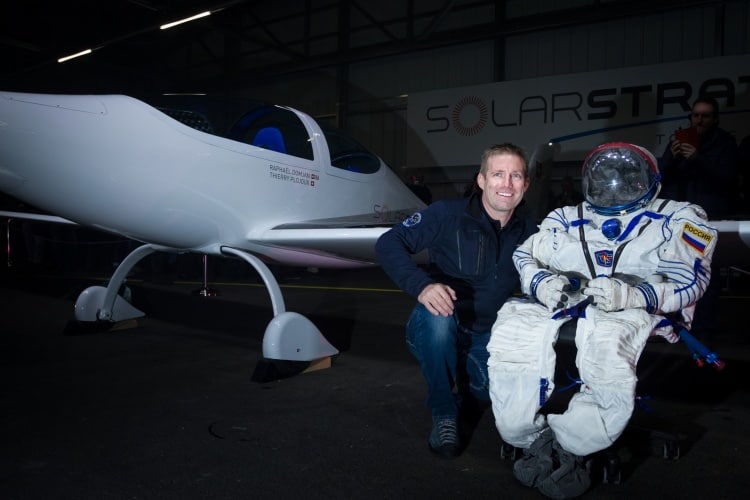Solar space plane makes public debut
SolarStratos, a solar-powered aircraft designed to reach the stratosphere, has been unveiled at a ceremony in Payerne, Switzerland.


Weighing 450kg, the two-seater plane has a wingspan of 24.8m and is covered with 22m2 of photovoltaic panels, operating with a cell efficiency of 22-24 per cent. These power a 32kW electric motor, which drives the 2.2m propellers. Lithium-ion batteries provide 20kWh of storage.
The project is the brainchild of Raphael Domjan, who in 2012 became the first person to circumnavigate the world in a solar-powered boat as part of the PlanetSolar venture. Piloting SolarStratos, he will now attempt to be the first person to reach the stratosphere in a solar-powered aircraft, flying to more than 80,000 feet.
“This is a great day for the SolarStratos team,” said Domjan. “Our goal is to demonstrate that current technology offers us the possibility to achieve above and beyond what fossil fuels offer.”

“Electric and solar vehicles are amongst the major challenges of the 21st century. Our aircraft can fly at an altitude of 25,000m and this opens the door to the possibility of electric and solar commercial aviation, close to space.”
Register now to continue reading
Thanks for visiting The Engineer. You’ve now reached your monthly limit of news stories. Register for free to unlock unlimited access to all of our news coverage, as well as premium content including opinion, in-depth features and special reports.
Benefits of registering
-
In-depth insights and coverage of key emerging trends
-
Unrestricted access to special reports throughout the year
-
Daily technology news delivered straight to your inbox










UK Enters ‘Golden Age of Nuclear’
The delay (nearly 8 years) in getting approval for the Rolls-Royce SMR is most worrying. Signifies a torpid and expensive system that is quite onerous...